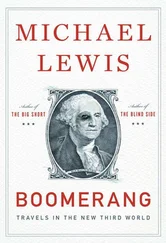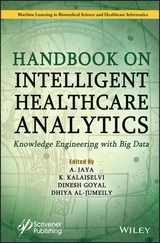Technology – it is not about automation of processes to eliminate jobs; it is about exploring, considering, and adopting existing or new technology to augment the human interactions in the healthcare ecosystem. Because health data can grow exponentially and with the pace of change intensifying faster than ever, healthcare organizations are investigating and beginning to implement the latest innovation in technologies to prepare and support the digital transformation era. It is also an enabler to move away from a paper-led industry to a paperless culture that allows healthcare organizations to move forward and on par with other industries.
We truly believe the new and innovative technologies such as in-database analytics, in-memory analytics, open source, artificial intelligence, cloud, and virtual reality (to name a few) will help tame the challenges of managing health data, uncover new opportunities with analytics, and deliver a higher value care by augmenting data management with embedded analytics.
The intended audience is business and IT healthcare professionals who want to learn about new and innovative technologies, process improvement, and managing people to be successful in their line of work. The content in this book is for the business analysts who want to be smarter delivering information to different parts of the organization. It is for the data scientists who want to explore new approaches to apply analytics. It is for managers, directors, and executives who want to innovate and leverage data and analytics to make insight-driven decisions affecting the healthcare sector.
You should read this book if your profession is in one of these groups:
Executive managers, including chief executive officers, chief operating officers, chief strategy officers, chief information officers, chief marketing officers, or any other company leader who wants to integrate people, process, and technology for efficiency.
Line of business managers that oversee technologies and want to adopt innovative technologies providing quality healthcare.
Business professions such as data scientists, business analysts, and quantitative analysts who analyze data and deliver data-driven insights to the leadership team for decision-making.
IT professionals such as data engineers, database administrators who manage the healthcare data, ensuring its readiness, easy accessibility, and quality for analytics and reporting.
This book is ideal for healthcare professionals who want to embrace the digital transformation. It provides insight to improve the data management and analytical processes, explore new technologies applying analytics to complex data, and learn new skill sets to become pioneers in their healthcare organization.
This book can be read in a linear approach, chapter by chapter. However, if you are a reader who wants to focus on a specific aspect such as people, process, or technology, you can simply jump to that specific chapter. If you are not up to date with the healthcare industry, we highly suggest starting here with Chapter 1, as it highlights the demand for and the state of healthcare. You can proceed to Chapters 2– 4to see how healthcare organizations are leveraging people, process, and technology. Chapter 5brings all of the elements together and shows how you can unify and connect people, process, and technology to better manage health data and apply advanced analytics to derive intelligence for strategic actions. Chapter 6is a must-read since it talks about the future of healthcare and how to anticipate the digital transformation with innovative technologies. Chapter 7provides final thoughts from me (a data and analytics leader) and Mike (a business executive) and what actions you can take to advance in healthcare. Nonetheless, each chapter can stand on its own with minimal context from other chapters. The table below provides a description and takeaways for each chapter.
| Chapter |
Chapter purpose |
Takeaways |
| Introduction |
Highlights the demand and state of the healthcare industry. Shows how the industry has changed and how much demand there is for healthcare with evolving regulations. |
What has changed?How can data and analytics have provided better information for healthcare?What are some things organizations can do to improve healthcare?What are innovative healthcare companies doing? |
| People |
Demonstrates that humans are the most important assets in an organization and investing in people can prepare the healthcare sector for a more promising future. |
What kind of human investment is needed?What skills are needed?What roles are in high demand?How do you build a resource library? |
| Process |
Examines how to improve current processes from data collection to analysis to reporting. |
What is the current process?How can it be improved?Why do you need to develop a consistent process?What sponsorships are needed? |
| Technology |
Evaluates the technology landscape and what is available today. Considers what you can do to integrate data and analytics. |
What is available today for immediate implementation?Should you consider open source technology?What are some pros and cons using each type of technology?What are the costs and benefits of each technology? |
| Unifying People, Process, and Technology |
Connects and summarizes how to unify people, process, and technology in a cohesive approach. |
How do you influence culture change?How do you get your organization to move up in the analytical stages?What are some considerations using analytics in healthcare?Share some examples and use cases. |
| Future in Healthcare |
Examines new technologies and emerging technologies that can improve healthcare. |
What does the future hold for healthcare?What are some focus areas being considered?How does human intelligence play a key role?What should you consider as a professional in healthcare? |
| Final Thoughts |
Concludes the book with the power of you delivering insight-driven decisions and intelligence. Final thoughts about the future of the healthcare sector. |
What are some actions you can take today to impact the future in healthcare?Recommendations.Final thoughts. |
Let's Get Started
The healthcare sector is one of the most data-intensive industries. All healthcare organizations have data and much of that data is in a siloed, fragmented ecosystem that is collected in multiple channels from a multitude of sources that stream in from every direction. Mike and I want to share with you a real-world use case of a healthcare company focusing on integrating and connecting people, process, and technology. We want to provide details on how to transform the healthcare industry with a unique perspective from a finance executive and a technologist to give you a holistic view of IT and business. By integrating people, process, and technology, it will give your organization a strong foundation for the inevitable digital transformation in healthcare. Let's get started.
The topic of health comes up in many conversations and it happens every day in many of our salutations. When you see or meet other people such as family, friends, and perhaps someone you have just met, it is very common and customary for us to start a conversation with an expression “How are you?” Most of time, we receive a response “I'm good,” or “We're okay,” or “I'm fine.” Other times, and more likely with family and close friends, we get intimate details such as “I am not feeling too good,” or “My wife and I have been sick with a cold,” or “My daughter was recently in the hospital for a sports-related knee injury.” These conversations normally lead to further and more detailed discussions about us and our wellbeing. Conversations and discussions around health can be attributed to its natural presence and ominous impact on all of us.
Читать дальше












